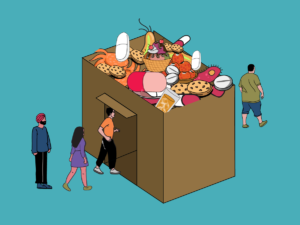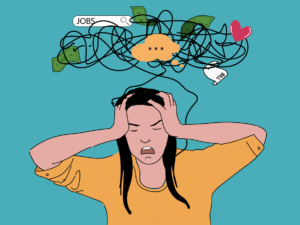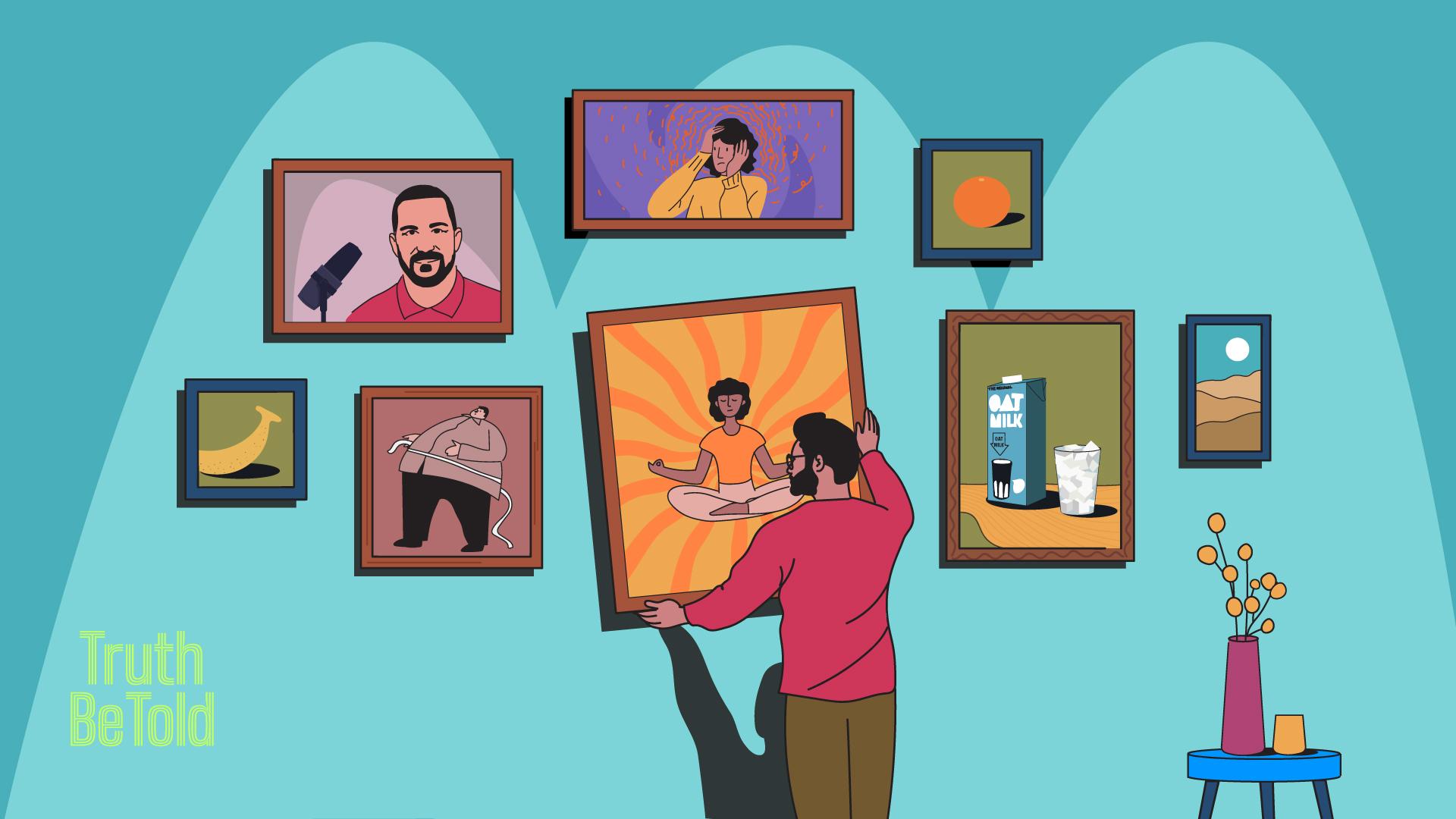Rapid fiver: 5 truths on health from us
Obesity NOT our fault? What’s a “science lifestyle?” Oil in your milk? A few things to discuss over lunch at office.
The most trustworthy source of food and
fitness journalism in the country.
Hello, hello, this is Samarth!
We hit a major milestone last week and I’m excited to share it with you all: 5,000 subscribers for Truth Be Told! Woohoo! 🎉
Small wins for our small team make us feel like we’re on top of the world, so thank you to each and every one of you who joined us along the way. We’re always on the lookout for new readers who share our love for truth and storytelling, so here’s a small favour to ask: can you tell three of your friends about us? Just three?
Send them a link to our website or your favourite story so far and get them to sign up. Your help would mean everything to us. Thank you already!
Today, we’re trying something new, something we had envisioned long before our launch but hadn’t put into action until now. It’s called “Five Truths” — a curated edition where we surface our favourite health writing from outside the TBT universe.
We believe curation has value: we can’t cover everything ourselves, but we can certainly link you to the best from around the internet. That’s why “Five Truths”.
I’d love to hear your feedback on this new format. Would you like to see more of it? Let me know your thoughts.
One: Scientists Don’t Agree on What Causes Obesity, but They Know What Doesn’t (New York Times)
What causes obesity? Is it your genes, lifestyle choices, gut microbiome, psychological factors, environmental factors, medications, or hormonal imbalances?

At a recent meeting of top obesity researchers at the Royal Society in London, experts from various fields — including nutritional biology, endocrinology, physiology, evolutionary anthropology, biochemistry, and ethology — concluded that there is no consensus on what causes obesity.
This lack of consensus is striking given the numerous theories on “why we get fat” that are often discussed.
Now broadly, there are two ways to think of obesity. One, as a “personal failing” which is often attributed to poor individual choices like overeating and a lack of exercise. Or two, as a “systemic problem” stemming from societal and environmental factors such as limited access to healthy foods, sedentary lifestyles and poverty.
The experts who gathered here were clear:
The three-day meeting was infused with an implicit understanding of what obesity is not: a personal failing. No presenter argued that humans collectively lost willpower around the 1980s, when obesity rates took off, first in high-income countries, then in much of the rest of the world. Not a single scientist said our genes changed in that short time. Laziness, gluttony and sloth were not referred to as obesity’s helpers. In stark contrast to a prevailing societal view of obesity, which assumes people have full control over their body size, they didn’t blame individuals for their condition, the same way we don’t blame people suffering from the effects of undernutrition, like stunting and wasting.
This is important because in everyday conversations, the individual choice bias dominates — which may not be very helpful.
Until we see obesity as something that’s been imposed on societies, not as something individuals choose, the fat shaming, magic hacks and bad policies will continue. Until we stop blaming ourselves and one another and start focusing attention on environments and systems, the global obesity rate will continue its ascent — a trend no country has substantially reversed, not even in children.
Read the article on the New York Times.
Second: That’s a Stress Response
More on health being a systemic problem in this one.
Over the past few months, I have been reading about the relationship between stress and physical health — fascinating and important stuff, a topic we will explore more in TBT.
Which is why I loved this piece by Anne Helen Petersen (whom I first discovered a few years ago after reading her viral essay on millennial burnout).
She talks about her initial refusal to connect her hair loss to pandemic-related stress and later realising that this was just a physical manifestation of accumulated stress and trauma — something so many people had experienced in so many different ways.

In this piece, she starts from her story and zooms out to give a society-level view and argues that until recently, there was “very little understanding or acknowledgment of the physical and psychological effects of systemic racism, intergenerational trauma, and gender discrimination, and we’re only now coming to understand how sustained exposure to fatphobic, transphobic, and homophobic environments affects the body.”
As a society, we are just generally reactive instead of proactive. We funnel money towards catastrophe response instead of investing in the sort of systems, change, or safety nets that would mitigate if not altogether prevent the catastrophe in the first place. We mourn consequences instead of looking unflinchingly at causes. There is no slack in the system, no space for bodily or psychological fragility, no accounting for rest and recuperation.
And yet: our bodies, as one woman put it to me, are amazing. They are trying so hard to protect us, even when their responses don’t immediately make sense. It’s our structures — the units of community and family and care that are supposed to catch us — that are fundamentally unwell.
This is a thought-provoking piece, and some of you may find it relatable. You can read it on her Substack.
Like what you see so far?
Get TBT articles in your inbox every Saturday
Third: Oatly is the New Coke

If you’ve been following us for a bit, you might have picked up on the fact that we’re not exactly food marketer’s biggest cheerleaders. In fact, we’re more like that sceptical friend who side-eyes everything they say. But can you blame us? With all the trickery out there, it pays to be cautious.
This article has a great breakdown of the Oat Milk sold by the Swedish company Oatly. The writer highlights two key points about this ‘healthy’ alternative to regular milk.
One, Oatly’s oat milk is hiding a sweet surprise: loads of maltose, a high-glycemic sugar that can spike your blood sugar levels more than table sugar. Even worse, it has a higher impact per gram than the infamous high-fructose corn syrup
Two, it talks about the canola oil, the secret ingredient which gives Oatly its milk-like consistency — but it’s not exactly ‘healthy’ as the company would want its consumers to believe.
I have never consumed Oatly’s product, so this is not personal.
But I like how the writer places this company’s marketing strategy in the context of the playbook mastered by sugar, tobacco, soda, and many more companies to reveal the repetitive pattern:
– Obscure the truth (‘make vague claims that make consumers feel good’)
– Create confusion (‘fund research showing the harmful ingredients are healthy, or at least not provably harmful’)
– Create a strawman argument (‘when people criticize the ingredients or health claims, strawman their arguments by focusing on the most easily dismissed criticisms’).
Read the article here.
Fourth: The two Lifestyles
At TBT, we enjoy listening to and learning from the Huberman Lab podcast hosted by Dr. Andrew Huberman, the Stanford professor of Neurobiology. It’s worth checking out.
I recently found this blogpost from a fellow Huberman fan which had this excellent table on two different lifestyles: the “default” lifestyle and the somewhat optimised “science-backed” lifestyle.
I like this table he shared — a handy reminder of the obvious things.
| Default Lifestyle | SCIENCE Lifestyle |
|---|---|
|
|
|
|
|
|
The table is based on the ideas Huberman talks about, though I am not sure who created the table.
The full post by Mr. Money Mustache is worth reading.
Like what you see so far?
Get TBT articles in your inbox every Saturday
Fifth: Dopamine
You have heard about dopamine, right?
It is a neurotransmitter that plays a crucial role in the brain’s reward system. It’s often referred to as the “feel-good” chemical because it’s associated with feelings of pleasure and satisfaction. It is released in response to rewards, both natural and artificial, and plays a key role in motivation, learning, and decision-making.
Decoding how dopamine works in the age of instant gratification can help to understand our own behaviour.
In this short five-minute video, Robert Sapolsky — the author of Behave — explains the science of pleasure: Dopamine, he says, is not solely about pleasure; it’s about the anticipation of pleasure. It’s the pursuit of happiness, rather than happiness itself, that drives us.
Furthermore, he says that the level of dopamine in our brains is directly related to the uncertainty of the reward we anticipate. The more uncertain the reward, the higher the levels of dopamine we experience. If we reduce the level of unpredictability, the rise of dopamine decreases as well.
Why does this matter?
By understanding how dopamine is released and its role in our pursuit of rewards, we can become more mindful and intentional about the behaviours and activities we engage in. This allows us to master dopamine rather than becoming a slave to the quick dopamine hits that can lead to addictive and harmful behavioursbehaviors.
For instance, activities like exercise, meditation, or learning a new skill can provide a slow and consistent release of dopamine, leading to a sense of satisfaction and accomplishment that lasts longer.
In contrast, activities like binge-watching TV, scrolling through social media, or consuming junk food can create quick dopamine hits that can be addictive and harmful in the long term.
So avoid behaviours that lead to sudden spikes in dopamine. Focus on habits that provide slow and steady releases of dopamine over time.
(We’ve written a lot about dopamine, here on Truth Be Told. Check out this, this and this)
Like what you see so far?
Get TBT articles in your inbox every Saturday

